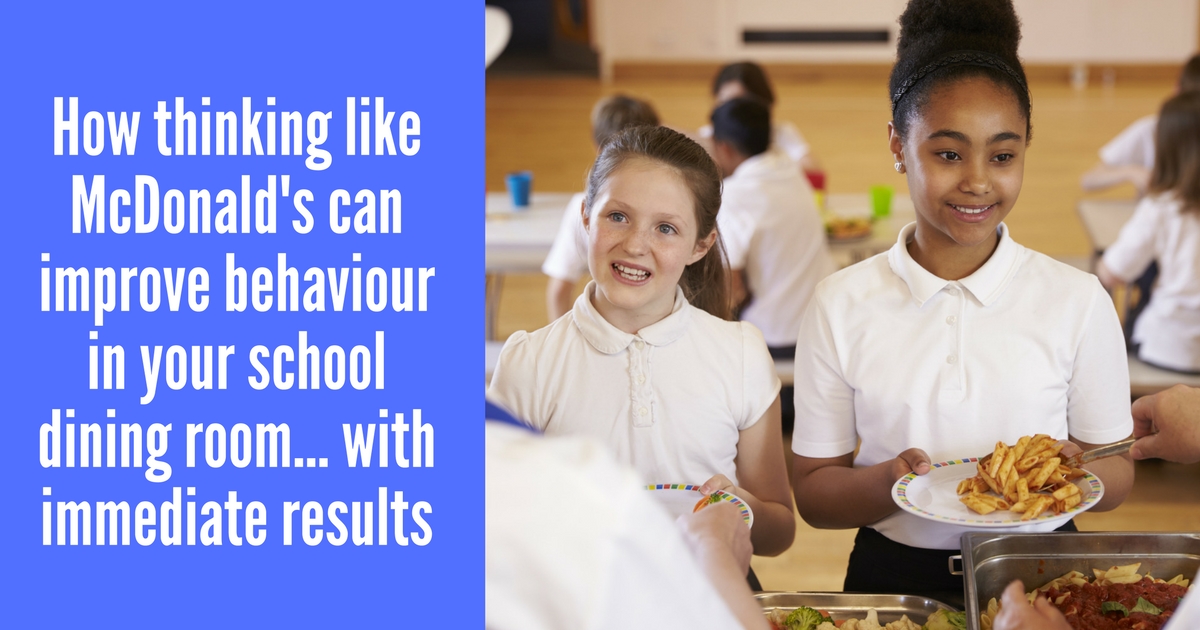Fact: behaviour incidents are most likely to happen at lunchtime.
It’s when children get the opportunity to socialise and blow off steam – but it’s also the time most likely to spark low-level behaviour, social disputes and parental complaints.
And the frustrating thing is: many of these incidents are entirely avoidable.
So – the obvious question is: are there any small, practical steps that you can take, that will work in any school, that will have an immediate effect on lunchtime behaviour?
The answer is yes… actually, there are several, and I’d like to share one with you right now.
(In fact, if you’re not using this method, you risk missing out on one of the simplest ways of improving behaviour at lunchtime.)
Ever heard of dead time?
It’s any time when students aren’t directed to a task or activity. That in-between-time, when pupils are left to their own devices, to entertain themselves. It’s where low-level behaviours take root and spread.
The technique I’m about to give you measures dead time, so you’ll be able to see for yourself its effect on your dining room provision.
Step 1: A simple way of measuring dead time in the dining room.
During a normal school day, visit the school dining room, about 10 minutes into lunch hour.
From the line of children queuing for their food, select three children and write down their names. The children should be reasonably spaced out: pick one standing a third of the way back, another two thirds back, and one near the very end.
Now, open up the timer app on your smartphone and start timing.
When the first pupil has been completely served and walks away from the line to find a table, record the time. Do the same for the second and third pupils.
The last step is to use the calculator app on your phone to work out the average wait time.
Write it down… and that’s it. Job done.
Step 2: What this information tells you.
This tells you how much dead time the average child experiences waiting in the queue for lunch.
The behaviour in the line waiting for lunch has a direct impact on the behaviour of all of the students in your dining room.
Remember:
- The longer the students wait…
- the more low-level behaviours (noise, pushing, silliness, shouting) you get…
- …and the more those behaviours spread…
- …across the entire dining room.
I’ve repeated this experiment in dozens and dozens of school dining rooms, and I’ve noticed the best all have one thing in common: they all have a waiting time of less than 5 minutes.
Why? The explanation is simple. Those schools are keeping dead time to an absolute minimum.
How does this relate to McDonald’s?
- Like most fast food businesses, McDonald’s analyse and time every part of their cooking process to ensure that food is served as efficiently as possible to waiting customers. They understand that quicker service = more profit.
- In schools, this translates into: quicker service = better behaviour.
Now – look at your average time. If you are below the 5 minutes mark, well done! Your school is doing well. Pat yourself on the back and make a note to check again in a month’s time.
Longer? Then there’s room for improvement.
Step 3: Making improvements.
But what if your wait time was longer than 5 minutes?
This tells you it’s likely behaviour in your school dining room could improve, leading to a better experience for everybody. Remember, the impact of lunchtime behaviour isn’t limited to the hours of 12-1: it can have a significant knock-on effect on afternoon lessons too.
It’s likely the long waiting times are leading to avoidable noise and low-level behaviour. That means it’s time to put in place a plan to reduce dead time.
(If you’d like some ideas on how to do this, we have answers on this page.)
Now implement your changes and measure the average waiting time again. As the amount of dead time is reduced, you’ll see for yourself the immediate impact on dining room noise and behaviour.
The result will be fewer social disputes and arguments, and a happier lunchtime for students, supervisors and teaching staff.
This is just one, simple way of making your lunchtime provision the best it can be – and reducing behaviour incidents in the process.
*Obviously, we’re not endorsed by or associated with McDonald’s in any way.

